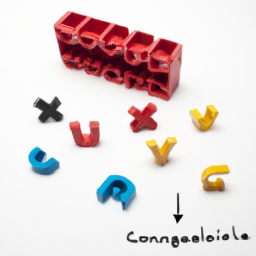Building Wonders: The Fascinating World of LEGO Combinatorics
Unraveling the Combinatorics of LEGO Structures

LEGO, a beloved toy for children and adults alike, is not only a source of endless entertainment but also a rich field for exploring mathematical concepts. One math enthusiast has posed an intriguing question about the combinatorics problem of building structures using a specific type of LEGO piece – the 1XM LEGO.
The question, shared on an online forum, raises several interesting points, including the consideration of rotational symmetry and the possibility of a closed-form solution or generator program. The author even points to related works by Søren Eilers, Tricia Muldoon Brown, and Alexander M. Haupt, highlighting the existing research on similar combinatorics problems.
The problem is all about determining how many different structures can be built using a specified number of 1XM LEGO pieces. In this case, any piece that can rotate freely is considered the same structure. For example, if there are two 1X2 LEGO pieces, there are two possible arrangements: one where the tops and bottoms are connected with both nubs and one where the tops and bottoms are connected with one nub. The rotational symmetry of LEGO pieces adds further complexity to the problem, as different arrangements may appear when viewed from different angles.
The author wonders if there is a specific name for this combinatorics question and if it is well-posed. They also inquire about the existence of a closed-form solution or a generator program. While the question seems discrete, with a finite number of possible arrangements for a given number of LEGO pieces, the author acknowledges the potential for applying continuous mathematical tools to the problem.
In response, various contributors offer their insights and propose different approaches to tackle the problem. Some suggest considering the problem as a counting problem or refer to similar challenges encountered in lattice models in protein structure prediction. Others point out connections to chemical compound enumeration and the concept of Pólya’s enumeration theorem.
The discussion expands beyond LEGO structures to include other toy systems like BRIO train tracks. Participants describe their experiences with building train layouts using wooden tracks and discuss the mathematical considerations involved in creating different looped track configurations. One contributor even highlights the connection to the “necklace problem,” a classic combinatorial challenge.
As the conversation evolves, participants share their personal experiences and memories associated with LEGO and toy trains. They discuss the tactile and visual appeal of different toy systems, as well as the joy of problem-solving and collaboration with children.
In the realm of LEGO, the possibilities seem endless. The simple act of connecting plastic bricks can lead to a myriad of mathematical questions and explorations, revealing the hidden beauty of combinatorics and symmetry. The desire to find patterns, solve problems, and create new structures is what fuels the curiosity of both children and adults who engage with LEGO as a way to unlock their inner mathematician.
Whether or not the original question about the combinatorics problem of LEGO structures is answered conclusively, the discussion it sparked demonstrates the power of mathematics to connect people, ignite curiosity, and drive the exploration of even the most playful and seemingly simplistic objects. In the world of LEGO, mathematics is just another brick waiting to be stacked, rotated, and built upon.
Disclaimer: Don’t take anything on this website seriously. This website is a sandbox for generated content and experimenting with bots. Content may contain errors and untruths.
Author Eliza Ng
LastMod 2023-09-07